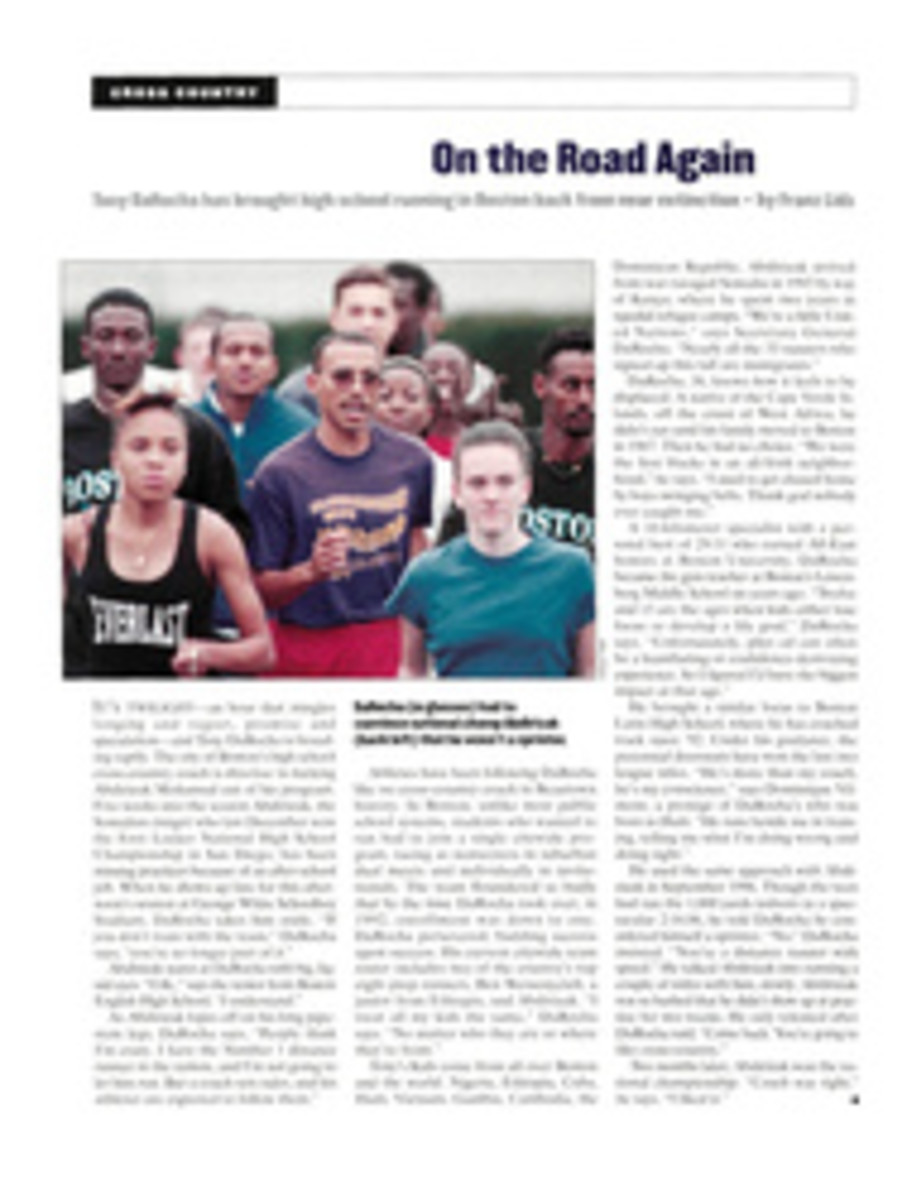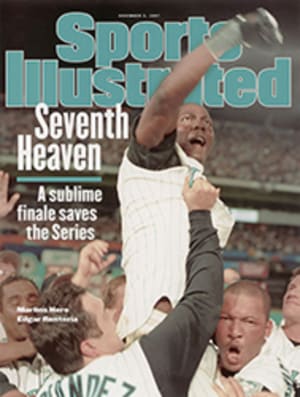
IT'S A SMALL WORLD AFTER ALL THERE'S NO REGION ON EARTH TOO REMOTE TO MERIT A LONELY PLANET TRAVEL GUIDE
Tony and Maureen Wheeler wrote their first guidebook at a
kitchen table in a tiny apartment in Sydney, Australia, in 1973.
The couple had just completed a six-month journey, starting in
England, following the "hippie trail" across Europe and Asia and
hitching a yacht ride to Australia. "We weren't hippies," says
Tony. "We just didn't have any money."
Maureen had grown up in Belfast, Northern Ireland, and hadn't
traveled until she crossed the Irish Sea at age 20 to take a job
in London in the wine import business. Tony had had a
peripatetic youth--his father was an airline pilot, and the
family lived in Pakistan, the Bahamas and the U.S. before
returning home to England--but he was intent on becoming an
automobile executive. He enrolled in the M.B.A. program at the
London Business School. He and Maureen met on a park bench. "It
was a love-at-first-sight type of thing," he says.
When Tony received his degree, the couple decided to embark on a
long trip. "The plan," says Maureen, "was to spend a year
roaming about, then return to London and get on with our
careers." They paid $150 for an old van and drove it through
Europe, Turkey and Iran and into Afghanistan. They pitched their
tent next to the van or slept inside the vehicle. They sold it
in Afghanistan for $5 more than they had paid for it and
continued traveling, by bus and train, through Pakistan, India,
Thailand, Singapore and Indonesia. After they arrived in
Australia, they found jobs to save up for the return trip.
"In Australia," recalls Tony, "people were constantly asking us,
'Where did you go?' and 'How did you get there?' and 'How much
did it cost?' There were no guidebooks for inexpensive travel in
Asia or the Middle East at that time. So we wrote one." It was
called Across Asia on the Cheap, and it covered the Wheelers'
journey in a mere 96 pages. "It was primitive and simple," says
Tony, "but there was nothing else--it was the best thing going."
A friend had a printing press in his basement, so the Wheelers
typeset the book and printed it. They collated and stapled the
pages by hand. Tony thought of a name for their new venture. "It
came from a Joe Cocker song," he says, "except I got it wrong.
The lyric was, 'Traveling across the sky, this lovely planet
caught my eye.' But I thought it was 'lonely planet.' Good
thing, too. I never would've called the company Lovely Planet."
The Wheelers made 1,500 copies of Across Asia on the Cheap and
sold them around Sydney for about $2 each. Within a week all the
books were gone. The Wheelers printed more. Again the book sold
out. Eventually more than 8,000 copies were sold. "All plans
were called off," says Maureen. "Forget going back to
England--we'll spend another year in Asia and write another
Lonely Planet guidebook. Then we'll go home."
So off they went. This time the book, Southeast Asia on a
Shoestring, was written in a $3-a-night hotel in Singapore. The
Wheelers returned to Australia and promptly sold 15,000 copies.
Then people with their own manuscripts started to contact the
Wheelers. How about a guidebook to Nepal? What about India?
Momentum built. Twenty-five years later the Wheelers' venture is
still going strong.
Lonely Planet has offices in Paris; London; Melbourne,
Australia; and Oakland, and has 201 employees. The company
offers 232 different travel books, which cost readers between
$10 and $30. Lonely Planet sells more than two million books a
year and grew by 35% in the past fiscal year. The guides cover
nations from Argentina to Zimbabwe. There are phrase books to
help with Mongolian, Swahili and Fijian. Last year Lonely Planet
became the first company to produce a guidebook to Antarctica.
Southeast Asia on a Shoestring is now in its ninth edition (it's
1,024 pages long) and has sold 500,000 copies.
The Wheelers have become the unofficial godparents of a
generation of high-enthusiasm, low-budget adventurers. Lonely
Planet books speak the language of youthful, independent,
tourist-trap-avoiding travelers. The tone is often smart and
wry, clearly the work of people who have gone to astounding
lengths to find the truth behind the brochures. Among the few
photos are some that are laughably bad, buffing Lonely Planet's
anti-slick-and-glossy image.
Irreverent observations can be found on most every page. A hotel
in Kenya is described as "very clean, though the architect ought
to be shot." Another hotel, in Central America, has hot water
"only after midnight in the first floor shower stall." The
Tahiti book warns against rampant taxi rip-offs and mentions the
best places to hitchhike. Lonely Planet guides give advice on
how to do your laundry in Antarctica, what to do if you've been
arrested in Iran and how best to avoid a bear attack in Alaska.
The Greenland book relates that the best way to get from one
town to another is by a five-day walk. The Bolivia book points
out that "magic mushrooms are not illegal in South America--but
make a positive identification before partaking."
"We get hundreds of letters from our readers," says Tom
Brosnahan, an author who has contributed to nine Lonely Planet
guides. "I get 25-page letters going over everything in my book
in exhaustive detail--what's changed, what's new. Our readers
feel an incredible involvement." At many international border
crossings, an informal exchange springs up as travelers going
one way swap annotated Lonely Planets with travelers going the
other.
Lonely Planet, not surprisingly, has dozens of
competitors--among them Let's Go! and the Rough Guides--but none
have significantly cut into the Planet's overwhelming market
share. "The difference between our company and our competitors,"
says Maureen, "is that travelers run Lonely Planet. We aren't
owned by a large parent company. We don't have lots of
accountants and businesspeople running around. And there isn't a
lot of bottom-line, penny-pinching stuff going on. We started
the company because we like to travel, and we keep it going
because we like to travel. Tony and I do a book simply because
we're interested in the place.
"Look at Yemen. How many [Western travelers] go to Yemen? Maybe
130 a year. Well, we have a book for them. Mongolia? People
aren't beating down the doors to go there. But what's more fun
to do--a book on Florida or a book on Mongolia? Well, for my
money, it'd be Mongolia."
Maureen, 46, and Tony, 50, have two children: Tashi, 17, and
Kieran, 15. The family lives in Melbourne, but Tony travels
upward of six months a year and Maureen only slightly less.
"You'd think that after traveling for 30 years you'd get kind of
blase about it," says company director and co-owner Jim Hart,
who started working for Lonely Planet in 1979. "But Tony will
still have a meal at three different places. He'll have a drink
here, a main course somewhere else and coffee down the road. He
wants to try every spot. And he's equally happy moving to a
different hotel every night, just for the sake of trying them."
New Lonely Planet books or updates of old ones are issued at a
rate of four per month. Soon, says Tony, Lonely Planet will have
a guidebook covering each nation on earth; they are working on
books about Bhutan and Afghanistan. For some travelers this is a
disturbing notion. Out-of-the-way places, critics say, are no
longer out of the way. Travelers have spoiled hundreds of quiet
places, disrupted local cultures and created greed and
infighting in previously tranquil towns. Some hotel owners say
that 70% of their clients are Lonely Planet readers. An
unflattering sentence in the guidebook is enough to drive a
restaurant out of business.
The Wheelers have grappled with these issues. "I still think
that the more people who travel, the better," says Maureen.
"Meeting other people, becoming aware of other cultures--that's
what travel is about. I like to think that our books give people
confidence to go a bit further, to try something new. The more
people who set off, the more who discover that the world is a
really friendly place. But huge numbers of people traveling to a
country will have an impact. We have to make people aware of
their impact and help them make that as positive an impact as
possible."
"The danger of guidebooks," adds Tony, "is that some people use
them too literally. They think the only places they can go are
the ones mentioned in the book. That's not true. We're not
selling blueprints--just guides. Travel is all about discovery.
If you follow only us, you'll miss the serendipity of finding
things on your own."
Frequent contributor Michael Finkel's most recent Lonely Planet
excursion took him to New Zealand.
COLOR ILLUSTRATION: ILLUSTRATIONS BY BRIDGET STARR TAYLOR [Drawing of monkey and penguin exchanging books]
COLOR ILLUSTRATION: ILLUSTRATIONS BY BRIDGET STARR TAYLOR [Drawing of kangaroo and pouched joey reading book]

